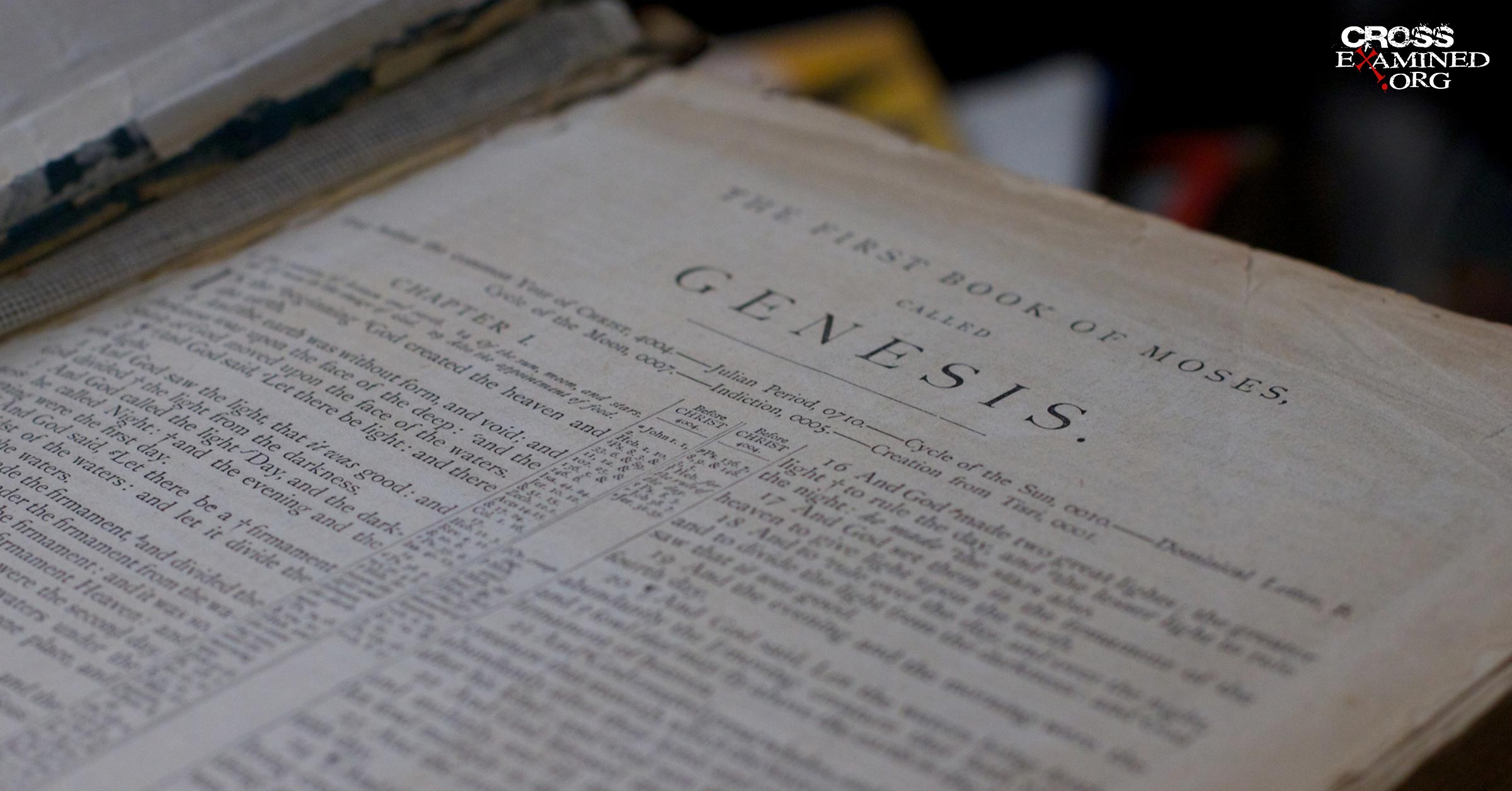Did They Really Exist? A Biblical and Scientific Defence of Adam and Eve
The historicity of Adam and Eve is a question which strikes at the heart of the Christian faith. If the primordial pair did not exist, then the historical and Biblical doctrine of the fall becomes extremely difficult to maintain. The apostle Paul clearly linked God’s redemptive plan and Christ’s atonement for sin with the fall described in Genesis (e.g., see Romans 5:12-21). We read in Romans 5:12-14,
12 Therefore, just as sin entered the world through one man, and death through sin, and in this way death came to all people, because all sinned— 13 To be sure, sin was in the world before the law was given, but sin is not charged against anyone’s account where there is no law. 14 Nevertheless, death reigned from the time of Adam to the time of Moses, even over those who did not sin by breaking a command, as did Adam, who is a pattern of the one to come.
In 1 Corinthians 15:20-22, we similarly read,
20 But Christ has indeed been raised from the dead, the firstfruits of those who have fallen asleep. 21 For since death came through a man, the resurrection of the dead comes also through a man. 22 For as in Adam all die, so in Christ all will be made alive.
Further evidence that Paul took Adam as a literal historical figure can be found in 1 Timothy 2:11-14 where he appeals to this doctrine in order to make an argument concerning the role of women in the church with respect to men. Paul writes,
11 A woman should learn in quietness and full submission. 12 I do not permit a woman to teach or to assume authority over a man; she must be quiet. 13 For Adam was formed first, then Eve. 14 And Adam was not the one deceived; it was the woman who was deceived and became a sinner.
Indeed, Jesus Himself clearly understood Adam and Eve to have been historical figures. In response to questioning from the Pharisees about marriage and divorce, Jesus declared (Matthew 19:4-6),
4 “Haven’t you read,” he replied, “that at the beginning the Creator ‘made them male and female,’ 5 and said, ‘For this reason a man will leave his father and mother and be united to his wife, and the two will become one flesh’? 6 So they are no longer two, but one flesh. Therefore what God has joined together, let no one separate.”
As if that wasn’t enough, the genealogies recorded in 1 Chronicles 1 and Luke 3 treat Adam as a historical figure. The literature associated with second temple Judaism also recognized Adam as a historical individual. The context and genre of the book of Genesis does not give any indication whatsoever that it is intended to be non-literal or ahistorical in the sense that much of apocalyptic literature (e.g., the book of Revelation) is. If we read the book of Genesis as metaphorical, at which point do we stop? The life of Abraham (to whom we are first introduced in Genesis 12) is clearly connected to the history that came before him, going all the way back to Adam. Those who discard Genesis 1-11 as metaphorical but understand Genesis 12 onwards to be historical are being inconsistent. The narrative simply does not allow for this interpretation.
Christians may have disagreements about peripheral matters such as the age of the earth. As I have discussed before, I don’t think that Genesis commits one to accepting a young earth position. However, the historical existence of Adam and Eve is another matter — it is a Gospel issue. Without a historical Adam and Eve, and without a historical fall, the doctrine of the atonement and redemption makes very little sense.
Having presented some Biblical reasons for thinking that Adam and Eve were literal historical individuals, I want to turn my attention to some of the common scientific arguments which are advanced against the notion of a historical Adam and Eve.
Minimum Effective Population Size
It is argued by many that coalescence theory and analysis of single nucleotide polymorphisms/linkage disequilibrium (SNP/LD) show that the mean effective population size for the hominid lineage is 100,000 individuals over the course of the last 30 million years. According to some theories, a genetic bottleneck occurred in the hominid lineage during the Middle Pleistocene with, according to one recent study, a mean effective population size of only 14,000 individuals. A range of values for the most recent common ancestor (TMRCA) is given as “450,000-2,400,000 years for the autosomes, and 380,000-2,000,000 for the X chromosome,” (Blum and Jakobsson, 2011).
The trouble with such attempts to estimate the effective population size and times of most recent common ancestors is the number of simplifying assumptions which are involved in the calculation. These include:
- Fixed population size.
- No migration.
- Random mating.
- Non-overlapping generations.
- Constant mutation rates.
- No selection.
The problem is that human populations change in size, migration in and out of the population does occur, humans selectively mate, mutation rates are often not constant, and selection does occur. Indeed, rates of recombination are also known to differ with respect to a location on the chromosome. Attempts at estimating effective population sizes and coalescent times, therefore, are rendered difficult by their high dependency on the assumptions made and the constancy of the pertinent variables. This makes it extremely hard to make dogmatic claims in this regard.
Let’s take an example to illustrate this point. One research paper examined 377 short tandem repeat (STR) loci pertinent to 1,056 individuals from 52 different populations (Zhivotovsky et al., 2003). The study inferred that modern humanity arose from a common ancestral population living between 71 and 142 thousand years ago from a relatively small population size (less than 2000 individuals). A previous study estimated this ancestral population size to be comprised roughly of 500 individuals (Zhivotovsky et al., 2000). This non-congruity was apparently resultant from the use of varying number of loci by the two studies as well as use of different sample sizes.
The Y-Chromosomal Adam Paradox
It is widely known that molecular dating based on the male-specific Y-chromosomal DNA tends to give somewhat more recent dates for the most recent common ancestors of modern humans than does molecular dating based on the maternally inherited mitochondrial DNA. This has been argued by some to show that Adam and Eve lived tends of thousands of years apart from one another. Though there are obviously alternative explanations for this phenomenon, one interesting hypothesis relates to the genetic bottleneck pertinent to the great flood described in Genesis. In that case, the most recent male common ancestor would be Noah (Noah’s three sons Shem, Ham, and Japheth, boarded the ark along with their respective wives). The most recent female common ancestor, however, would be Eve. This would quite readily account for the discrepancy between the data yielded from the Y-chromosomal and mitochondrial DNA sequences.
Where Did Cain Get His Wife?
The first thing to take notice of is that Adam and Eve had other sons and daughters besides Cain, Abel, and Seth. According to Genesis 5:4, “After Seth was born, Adam lived 800 years and had other sons and daughters.” It is also noteworthy that Genesis 5 records very long life spans, with people living up to an age of 900 years. Given this, Dr. Hugh Ross argues that “the possibility existed for a veritable population explosion. In fact, the world’s population could have approached a few billion by the time of Adam’s death at the age of 930.” There is some Biblical support for thinking that there was a reasonable population size following Cain’s murder of Abel. According to Genesis 4, Cain is given a mark “so that no one who found him would kill him.” This presupposes that there was a population size sufficient such that (a) there were people who might find Cain in the wilderness, and (b) Cain might be mistaken for someone else.
The possibility that Cain may have married his sister raises the old question of incest. It is not until the book of Leviticus, however, that laws are given against marriage between siblings. Adam and Eve were probably created genetically pure. It is, therefore, likely that the genetic defects resulting from the marriage between siblings would not present an issue for the first couple of dozen generations.
Summary and Conclusion
In conclusion, attempts to estimate coalescent times and effective population sizes are fraught with problems and require that we make a number of unrealistic assumptions. Perhaps it is possible that some of these estimates pertain to the human population sometime after the creation of Adam and Eve. The question of Cain’s wife is effectively resolved if we suppose that genetic defects resulting from the marriage between siblings was a later development. The existence of a historical Adam and Eve, however, is foundational to a full and proper understanding of the Gospel and Christ’s role as the “second Adam.” “For as in Adam all die, so in Christ, all will be made alive,” (1 Corinthians 15:22).










Leave a Reply
Want to join the discussion?Feel free to contribute!